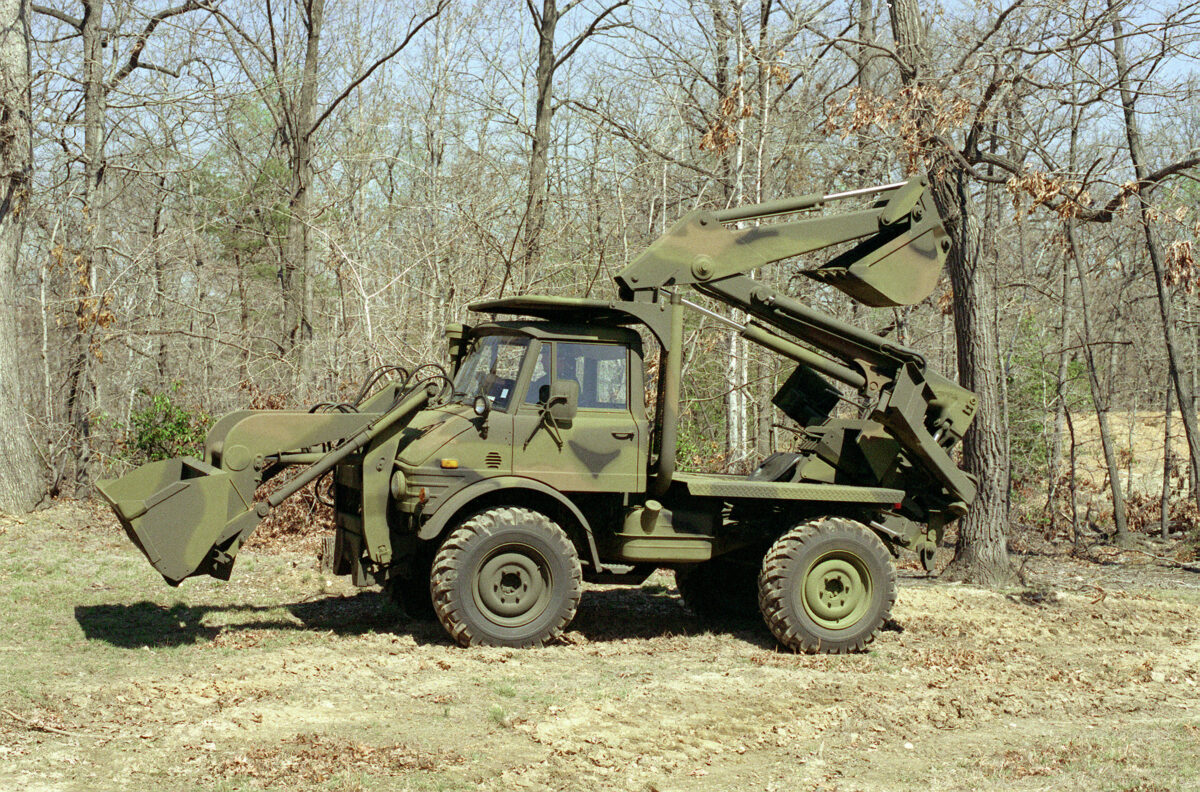Bob takes a look at a very unique vehicle in Kevin Vislocky’s collection, the Small Emplacement Excavator (SEE). This one’s for the engineering crew to make their life a little easier.
More info on the web:
https://olive-drab.com/idphoto/id_photos_see_tractor.php http://www.military-today.com/engineering/see.htm
Full Transcript
Kevin Vislocky is also a passionate collector of other stuff besides airplanes and so I thought it was kinda, well, unique in that sort of thing that he’s got these S.E.E.s, small engineer excavator that he’s gotten through the surplus system. But we’re going to talk about, you’re also, the rest of this army green sickness that you have, but you know, these things are unique and these came on during my early days. The engineers got these things, man, they put the D-ring handled shovel away and they were happy to get these things. So, but you know, in the surplus system, that you know these cost the government almost $95,000 a piece. They were made by Mercedes-Benz and again, most of all the engineer units had these. And so, tell me about this particular one, Kev, because you, you’ve got three available but let’s talk a little bit about this one.
[Kevin] This particular is somewhat unique. It is also part of the excavator type chassis. Same Unimog made by Mercedes Benz. Right. But this one had a forklift attachment on it and it was designed for field use. This can be adjusted. If you’re in rough terrain, it can be adjusted to go over obstacles and so forth. Which is unique to a forklift but also on the back of this is very unique. It has an articulating crane system.
[Bob] Okay.
[Kevin] And like all these, they’re designed to travel down the road approximately fifty five miles per hour.
[Bob] Right.
[Kevin] And yet when you get a location, this mechanism folds out into a normal crane type of system and in this case, it’s as a three arm crane. Lifts approximately four thousand pounds and it’s fully articulating. It was designed primarily for moving everything from cargo, ammunition boxes and so forth but it’s very articulate in, in the its ability to move in fairly close areas and so forth. It was very useful for that type of operation.
[Bob] You see, as an infantry guy, we were always jealous of the engineers because you know, we were still stuck with the D-handled shovel but we were always glad when these guys showed up because again, not only did they help move some of the engineering material and some of the ammo and especially in the rear area, in the support groups. But then lets walk over here and talk about the other one which really kind of modernized engineer units in the field because you know, back there in the 80s and the height of the Cold War, it was always about digging in and it was about the Soviets and you know, we had to have a hold down positions for not only our tow weapon systems, that sort of thing, and not as a lot of different today, but this thing came on board, man, we, we, we, we could, we could put together a position in a heart beat. From trenches for infantry guys, HUMVEEs with tow mounts, tanks, you name it, the engineers could do it with one of these.
[Kevin] A very capable machine, it has a bucket on the front just like a bulldozer.
[Bob] Yeah.
[Kevin] Fully articulating also there. But one of the neatest things about this vehicle is it has a hydraulic system. It’s all self contained and there’s approximately fifty feet of hose on the other side that you could attach these implements. That included a chainsaw, hydraulic controlled chainsaw, auger and also a jack hammer system so you could break up concrete, cut down trees and on the back is a regular Case manufactured back-hoe.
[Bob] Yeah.
[Kevin] This is a standard Case and as you said, that they would dig trenches, encampments and so forth with this but the biggest thing again, is it was self contained. You could get to a remote area and just with what the tools and implements that it had, it could do a lot of work more so than individuals could.

